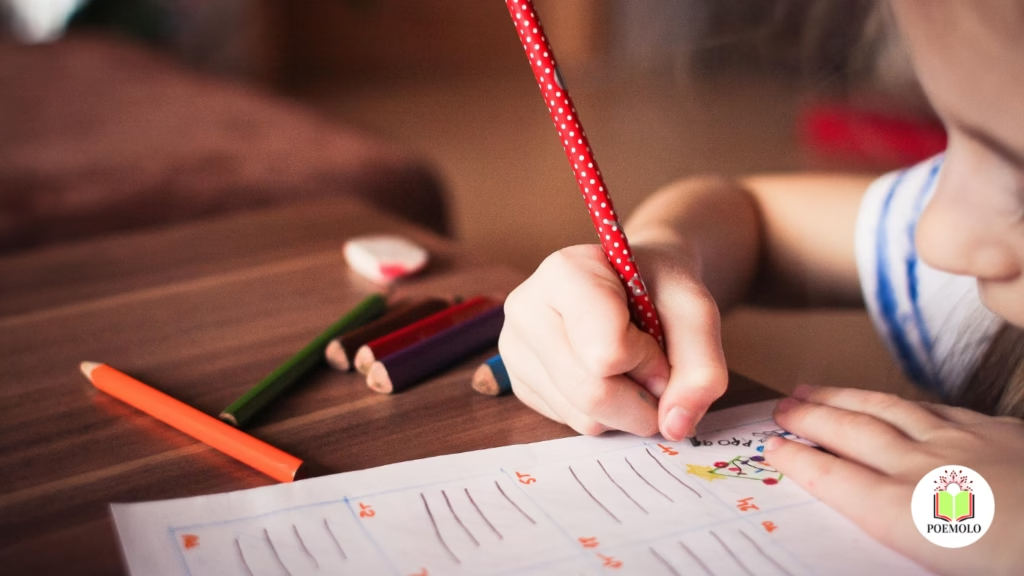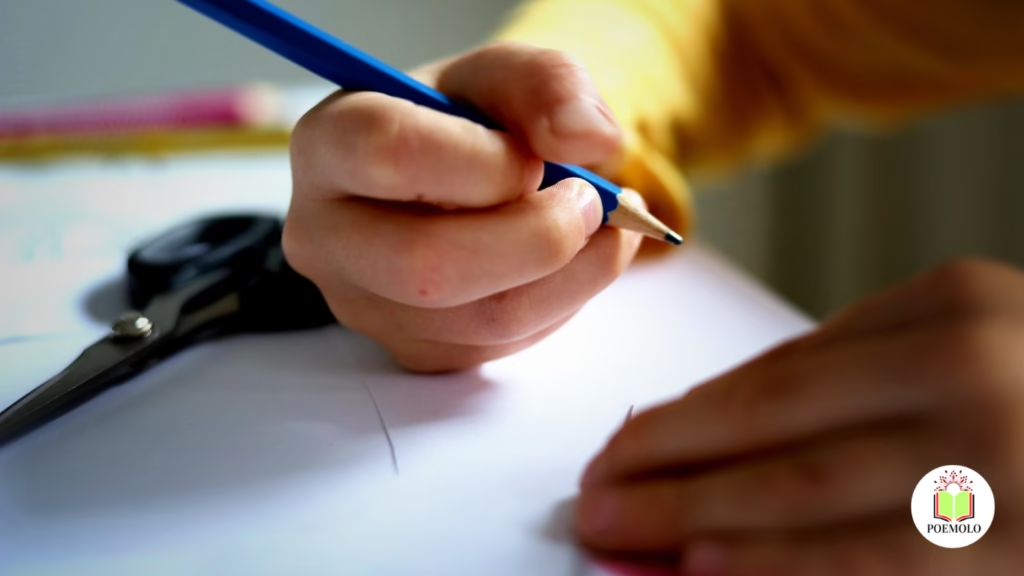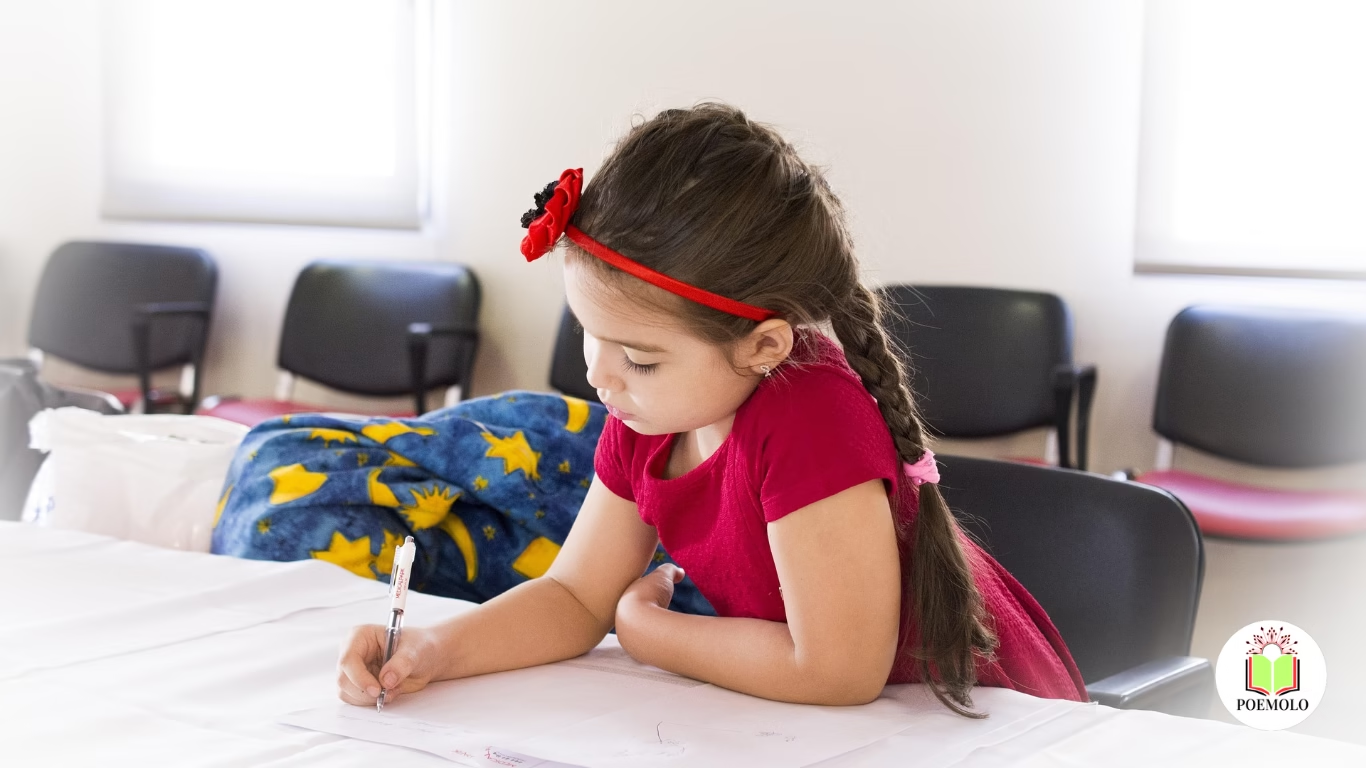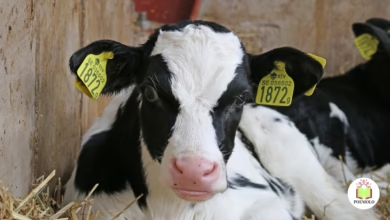Education plays a pivotal role in shaping the minds of young learners. For primary school students, education is a blend of curiosity, exploration, and fun. While traditional methods of teaching often rely on textbooks and lessons, adding creative tools like poems about education for primary schools can make a world of difference.
Poetry offers a unique way to engage young students, fostering their literacy skills, emotional development, and creative thinking.
Poems about education for primary schools not only make learning enjoyable but also provide a chance to explore deeper concepts, emotions, and ideas in a playful manner. Whether you’re a teacher looking for classroom resources or a parent interested in helping your child appreciate education through poetry, this article will guide you through the benefits of educational poems and how you can incorporate them into daily lessons.
In this article, we’ll look into the significance of educational poems, why they’re an essential tool for primary schools, and how you can introduce poems into your curriculum. Plus, we will provide a collection of engaging poems to make the process even more exciting.
The Importance of Poems About Education for Primary School Students

Understanding why poems about education are valuable is key to incorporating them into any educational setting. Here are some of the main reasons why poetry about education is so beneficial for young learners:
1. Encourages Language Development
One of the most prominent benefits of poems about education for primary schools is their role in enhancing language skills. Poems expose children to a wide variety of vocabulary and language structures, which is instrumental in developing their reading and writing skills.
Rhyming words, alliteration, and rhythmic patterns found in poetry contribute to better pronunciation and fluency. As children sing along to rhymes or recite verses, they build confidence in using language.
Related article: Exploring the Connection between Nature and Humans in Poetry
By engaging with poems, children learn new words and expressions in context, which helps them improve both their comprehension and retention abilities. Teachers can also take advantage of the repetition found in many poems to emphasize key language concepts and vocabulary.
2. Promotes Creativity and Imagination
Poetry invites children to explore their imagination and see the world through a creative lens. Poems about education for primary schools are often filled with metaphors, symbols, and imagery that encourage children to think beyond the literal meaning of words. This helps spark their curiosity, creativity, and problem-solving skills.
When students are exposed to different poetic forms, they are inspired to experiment with their own writing and express their ideas in unique and artistic ways. Writing their own poems allows students to develop their creativity and share their thoughts on topics like learning, school life, and friendship.
3. Enhances Emotional Expression
Young children may have trouble expressing complex feelings or ideas, especially in traditional classroom settings. Poetry serves as an excellent medium for them to articulate emotions and thoughts in a safe and structured way. Whether they’re feeling joy, confusion, excitement, or frustration about their school day, poems about education can help them identify and express these feelings.
By understanding how poets use rhythm, rhyme, and word choice to convey emotions, students can develop their emotional intelligence. They can also relate to the feelings expressed in poems, which allows them to feel more connected to their learning environment and their peers.
4. Encourages a Love for Reading
When children encounter poetry, they often experience a sense of joy and wonder. Unlike standard textbooks, poems about education for primary schools tend to be playful, engaging, and filled with delightful surprises.
The playful language and rhythmic nature of poetry make it accessible for young children, allowing them to enjoy the process of reading rather than seeing it as a task.
Introducing poetry into primary education builds positive associations with reading. As students read and memorize poems, they also begin to recognize the rhythm of language, which can translate into better reading fluency over time. Educational poems become a foundation for their overall reading development, promoting not just academic success but a love for books and reading.
5. Teaches Valuable Life Lessons
Many poems about education for primary school students contain deeper messages about important values such as perseverance, curiosity, hard work, and respect. Through the exploration of these themes in poetry, students can learn essential life lessons.
Whether it’s learning how to face challenges with a positive attitude or understanding the importance of teamwork, educational poems provide a moral compass for young minds.
These lessons are often more impactful when presented in poetic form, as they are easier to remember and internalize. The lessons embedded in poems about education serve as foundational values that students can carry with them throughout their academic journey and beyond.
Poem: The Magic of Learning
The Magic of Learning
Learning is magic, it’s true,
A world of wonder waiting for you.
With books and pens, and dreams so bright,
You can conquer the world with all your might.
Every page is a doorway to explore,
Every question opens a new door.
The more you learn, the more you grow,
A world of knowledge begins to flow.
So don’t be afraid to ask and learn,
For the magic of learning is always your turn!
Poem Analysis Table
| Element | Explanation |
| Title | The Magic of Learning – The title suggests that learning is like a magical process that opens up new opportunities. |
| Theme | Curiosity and Growth – The poem highlights the endless possibilities and personal growth that come with learning. It encourages curiosity and embracing the process of acquiring knowledge. |
| Tone | Encouraging and Inspirational – The tone is positive and uplifting, motivating students to embrace learning with excitement. |
| Structure | The poem consists of four stanzas, each with four lines. The structure follows a simple AABB rhyme scheme, which makes it easy to read and memorize. |
| Rhyme Scheme | AABB – The use of rhyming couplets adds rhythm to the poem, making it catchy and easier for young children to follow. |
| Imagery | The poem uses imagery related to magic and doors to symbolize the endless opportunities that learning can provide. “Every page is a doorway to explore” conjures the idea of opening new worlds through education. |
| Language and Word Choice | The language is simple and clear, ideal for primary school students. Words like “magic,” “wonder,” and “bright” create an atmosphere of excitement and positivity around learning. |
| Message | The poem encourages students to see learning as an exciting adventure, where asking questions and discovering new things is both fun and important. It emphasizes that learning is a lifelong journey filled with opportunities to grow. |
| Symbolism | Books symbolize the gateway to knowledge. Questions and new doors symbolize the curiosity that leads to new learning experiences. |
| Rhythm and Meter | The poem follows a steady rhythm that makes it easy to read aloud. The rhythmic structure mirrors the regular, predictable process of learning and discovery. |
| Repetition | The phrase “Every” is repeated to emphasize the continuous and limitless nature of learning. This repetition reinforces the idea that each moment of learning opens up new possibilities. |
| Alliteration | The repetition of the “b” sound in “books and pens” helps to enhance the musical quality of the poem and makes it more enjoyable for young readers. |
| Call to Action | The final lines – “So don’t be afraid to ask and learn, / For the magic of learning is always your turn!” – serve as a motivational call to action, urging students to take initiative in their education. |
How to Incorporate Poems about Education into the Classroom
Teachers and educators can use poems about education in a variety of ways to make learning fun and impactful. Here are some ideas on how to integrate poetry into primary school curricula:
1. Morning Poem Ritual
A simple but effective way to start the day is with a poem. Reading a short, engaging poem in the morning can set a positive tone and capture students’ attention right away. Teachers can choose poems that align with the theme or subject they plan to teach that day, introducing students to key concepts while making the learning process enjoyable.
2. Interactive Poetry Lessons
Instead of simply reading poems aloud, turn them into interactive activities. Have students work together to act out the actions or emotions described in the poem. This promotes collaboration and helps children engage with the poem on a deeper level. For instance, a poem about nature can inspire students to perform actions like pretending to be trees or animals.
Related article: Acrostic Poem about the Invention of Railroads
You can also create visual representations of the poems. Have students draw pictures that illustrate the scenes or ideas described in the poem, fostering creativity and encouraging them to visualize the content.
3. Poetry as Part of Cross-Curricular Lessons
Poems about education for primary schools can be used as a tool to introduce other subject areas. A poem about nature, for instance, can lead into a science lesson about the environment or plants. Similarly, poems about friendship or teamwork can support social studies lessons on community and cooperation.
By using poetry as an interdisciplinary teaching tool, you can help students make connections between different areas of knowledge while reinforcing the importance of learning across subjects.
4. Poetry Recitation Challenges
A fun classroom challenge involves having students memorize and recite short poems. This activity helps improve memory, public speaking, and fluency in a supportive environment. Teachers can create friendly competitions or encourage students to perform in front of the class, promoting confidence and a sense of accomplishment.
5. Poetry Writing and Sharing
After reading and discussing poems, students can try writing their own. They can create poems that reflect their thoughts on education, school, or anything they are passionate about. Teachers can host a poetry-sharing session where students present their work to the class, fostering a sense of pride in their creative achievements.
6. Creating a Classroom Poetry Wall
A classroom poetry wall can showcase a rotating collection of student-created poems, poems chosen by the teacher, or even famous works of poetry. This becomes a focal point in the classroom and a constant source of inspiration for students to read and enjoy poetry every day.
Examples of Poems about Education for Primary Schools

To inspire you, here are a few original poems about education for primary schools that can be used in the classroom or at home. These poems cover different aspects of education and learning, from curiosity to hard work.
1. The Magic of Learning
Learning is magic, it’s true,
A world of wonder waiting for you.
With books and pens, and dreams so bright,
You can conquer the world with all your might.
Every page is a doorway to explore,
Every question opens a new door.
The more you learn, the more you grow,
A world of knowledge begins to flow.
So don’t be afraid to ask and learn,
For the magic of learning is always your turn!
2. The Classroom is Our World
The classroom is where we start,
It’s the home for every heart.
With pencils, books, and lessons too,
We learn what’s old, and what’s brand new.
We read about the world so wide,
And take our learning with great pride.
The classroom is a place to grow,
To make new friends and learn to show.
Every subject is a chance to find,
New ideas to feed the mind.
In the classroom, we learn to be
All the best that we can see!
3. A Journey of Knowledge
The classroom is a place so bright,
Where you learn and reach new heights.
Books, pencils, papers galore,
Every day brings something more.
From math to reading, science too,
There’s always something fun to do.
Every lesson helps you grow,
And soon you’ll be a pro, you know!
Keep asking questions, keep exploring,
For knowledge is always rewarding.
Education is your map, your guide,
A journey of learning, with you by its side.
4. I Love My School
I love my school, it’s fun and bright,
Where we learn new things every day and night.
We read, we write, we paint and play,
Learning is exciting in every way!
Teachers guide us with so much care,
Showing us how to always share.
With friends beside me, we laugh and learn,
In school, there’s always something to discern.
I love my school, I really do,
Every lesson is something new!
With every book and every class,
Learning’s a treasure that will last!
Conclusion
Poems about education for primary schools are an excellent tool to engage young minds, enhance literacy skills, and promote creativity. From helping students develop a love for learning to teaching valuable life lessons, poetry has the power to make education exciting and memorable.
Incorporating poems into your daily routine—whether you’re a teacher or a parent—can inspire a love for reading, encourage emotional expression, and create a positive learning environment.
By using poetry in the classroom or at home, children can embark on a lifelong journey of discovery and creativity. So, the next time you’re looking for an engaging activity to support your child’s education, consider the magic of poems about education!





